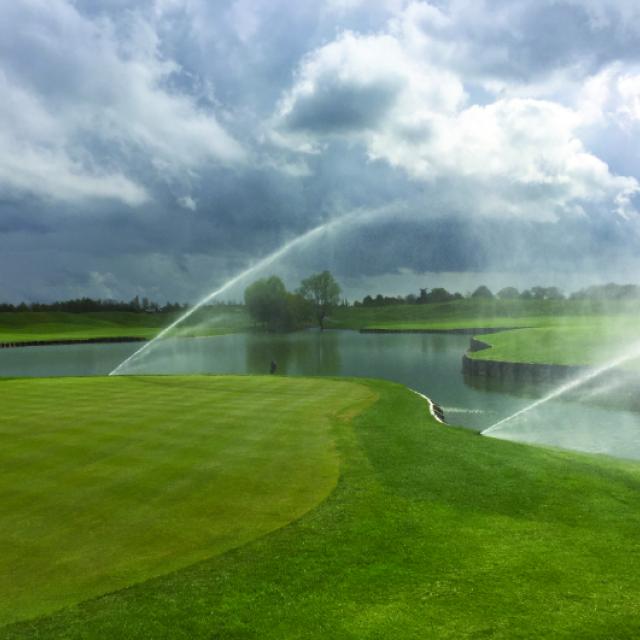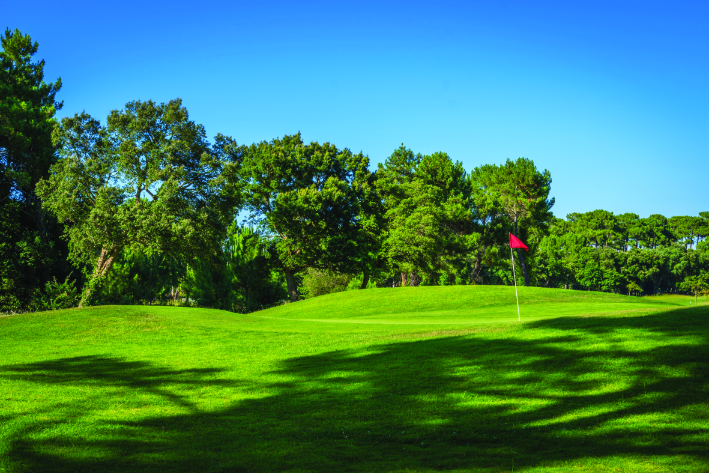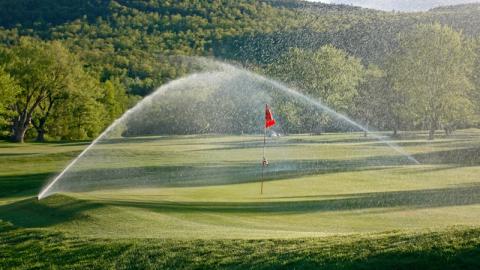Excessive use of water, intensive use of plant health products in order to have an impeccable playing surface, whatever the climate or season, for a long time now golf clubs have been accused of being bottom of the class in terms of protecting the environment. The issue divides opinion and the golf industry is still struggling to get rid of its poor image. However, over the last fifteen years, the different players, including the French Golf Association, have stepped up their efforts to make the courses more acceptable and the results are clear. Some have become real reservoirs of biodiversity and, in urban and suburban areas, the golf course plays the role of a veritable green lung.

50% of the 33,000 hectares of French golf courses act as a refuge for the fauna and flora
The 740 golf courses existing in France cover 33,000 hectares of natural space. The grass areas only account for 50% of the total surface area of the course, the remainder consisting of natural areas with little or no maintenance. And that is where we find the biodiversity.
In 2007, the French Golf Federation approached the Natural History Museum with a view to conducting a review of the flora and fauna of the Golf National course, in preparation for the Ryder Cup.
At the time, the naturalists sent to the site did not expect such positive results. “We were expecting to see areas that had been closely mown, that were very artificial, but we were confronted with an extraordinarily rich biodiversity, which was a real surprise” explained Philippe Jourdain, head of partnerships at the Natural History Museum.
In 2016, the Federation came up with the idea of launching a first national biodiversity study programme of French golf courses, and then launch, in 2018, the « Golf pour la Biodiversité » (Protecting Biodiversity with Golf) programme by awarding bronze, silver and gold labels to reward the most exemplary clubs in terms of the knowledge, conservation and enhancement of the environmental heritage. The museum’s experts began by familiarising themselves with the technical and maintenance constraints of a golf course, then drafted a set of specifications and set up a scientific committee. This institution is the scientific endorsement of the programme and gives it all its credibility.
The procedure for taking part in the programme is particularly well-defined. The aspiring golf clubs sign a charter of commitment before having an ecological survey carried out by a local naturalist organisation (National Forestry Department, League for the Protection of Birds, etc.), which then recommends a series of measures to be implemented. The participating golf clubs must complete two of these actions to obtain the bronze label, five for the silver label and all of them for the gold label.
Examples of measures to be taken:
• Grow plants on the banks of ponds to provide habitats for dragonflies and amphibians.
• Preserve the wooded areas, leaving the dead wood and leaves to create refuges for insects and birds.
• Install low dry-stone walls to contribute towards the development of certain flora.
• Limit artificial light to protect owls and bats.
To date, 90 clubs have been awarded the label, and almost 200 golf clubs have entered the competition. The champions are the Golf National, Chantilly, La Rochelle Sud, Merignies and Terre Blanche, all in the running for the gold label. However, the label is not obtained overnight, and it has been a long-term task for each of these highly committed candidates.
The results achieved by the Natural History Museum are proof of this. “In total, we recorded 2,200 species of flowering plants on the golf courses, which is a good proportion compared with the 7,600 varieties recorded in France. The courses are home to 91 species of dragonfly, compared with 97 that we know, and 28 varieties of amphibians, compared with 44 in France as a whole,” notes Philippe Jourdain. He concludes: “The programme is really taking off, golf directors are very involved in environmental issues and the industry is working hard to improve its practices”.
Reduced consumption of water and inputs
From now on, we know that the protected sites, which are the golf courses, constitute formidable reservoirs of biodiversity for the fauna and flora. However, the plants also have a vital need for water, as well as the species of grass used on the playing surfaces.
Most golf courses have natural watercourses, lakes or artificial reservoirs, all of which are ideal sites for biodiversity. 90% of golf courses use water that is not fit for human consumption for their irrigation, drawing on surface water, groundwater, rainwater, agricultural wastewater or, more rarely, treated wastewater.
The heat of the summer of 2022 and the drought that followed have further accentuated this trend, with an increase in the number of by-laws. Many golf courses, particularly those in the South of France, have been banned from watering their fairways, and in some cases their tees and greens too, thus jeopardising their very survival.
Moreover, in France, less than 1% of wastewater is treated and reused, quite different from Spain (8%), Italy (14%) and Israel (90%), the leaders in this field.
Making legislation more flexible and increasing the percentage of treated wastewater used to irrigate golf courses would be a way of saving water.
In addition, for several years now, golf clubs have been testing and planting new varieties of grass that are more resistant to drought and disease.

And finally, the renovation of obsolete watering systems installed in the 90s, with state-of-the-art, increasingly high-performance irrigation equipment, means that plants can be irrigated in amounts that are as close as possible to their actual water requirements, resulting in considerable savings on water.
In this new pattern, the sprinklers are repositioned in a triangular layout, to achieve optimum irrigation uniformity. The more sprinklers there are in the field, the greater the savings on water. The system includes both part-circle and full-circle sprinklers with high-performance nozzles.
The installation of a central control system connected to moisture sensors and weather stations is also recommended, yielding promising results both in terms of diagnosis and communication with the sprinklers. This elevated level of technology is in full swing for the golf clubs, which are increasingly looking for ways of managing their water consumption.
In periods of drought, some golf clubs maintain their course with just enough water to prevent the grass from scorching.
Finally, in the interests of the environment, 70% of golf courses are maintained without the use of plant health products, and according to the Labbé 2 law, this figure will rise to 100% by 2025.
The golf clubs are learning to manage water more sensibly, and in 20 years, despite the effects of global warming, they have reduced their consumption by 14% and continue to save on this resource. Players must accept that certain areas of the course will no longer be trimmed, which is less pleasing to the eye but better for biodiversity and the preservation of the precious resource that is water.

